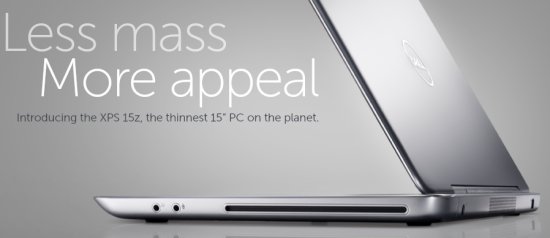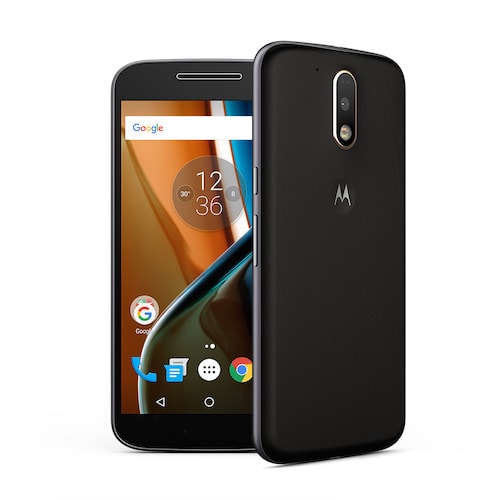A layman may see a product as a physical structure they buy, but it is more than that. Marketers design and market items using product levels.
What attracts buyers to a product? Finding the core product at the center of the offering.
Today’s discussion will reduce a primary product’s definition and provide real-world examples.
Imagine a core product as a product’s heartbeat—more than specs or materials.
This primary component offers to meet consumer needs and wishes or solve their problems. This fundamental value proposition summarizes the product and its market benefits.
Try a new laptop. The main product includes word processing, internet access, multimedia playback, and enough storage—the basics of every laptop.
Are you ready to explore key products?
Before discussing core products, let us define the three primary product levels.
Table of Contents
Central Product
A core product is an intangible value or service supplied to customers. Shampoo is the product, but the buyer wants clean, healthy hair.
A core product describes a product’s main benefit to a consumer. It fulfills its principal purpose. A car’s basic value is its capacity to move quickly. Transportation is its main product. Additional perks include appearance, speed, and safety.
Actual Goods
The real thing is touchable, holdable, and feelable manufacturing, packaging, and presentation matter. Categories are judged by their products.
Enhanced Product
Again, the augmented product is nonphysical. It consists of the value-added features, perks, and services you get with the product, not the physical component or core product.
Again, consider an automobile. The dealer normally offers many incentives when you buy a car. Some have cash-back offers or tie-ups with lower-interest banks. They provide warranties, guarantees, and after-sales service for a limited time. All these benefits are called ‘augmented products.’
Key Takeaways
- Core product refers to a product’s essential value proposition, which addresses basic demands and solves consumer problems.
- It goes beyond physical characteristics, concentrating on a product’s key benefits and distinguishing advantages.
- Understanding core products is critical for marketers to communicate effectively and meet consumer expectations.
What is the core product?
As the marketing world describes, a core product is the fundamental need or desire that drives a client to buy. By distinguishing this, we gain a clear understanding of why various products appeal to different buyers. Marketing ideologies identify five unique stages of a product, which are:
• Core product: The primary need or desire that drives the purchase of a product. It might include necessities like nourishment or space usage and deeply held values like prestige or enjoyment.
• Actual product: The actual product is part of a product or service called a “product.” It includes physical objects, such as footwear or vehicles, and services, such as vacation packages or tax advisers.
• Expected product: These represent the traits and attributes that customers expect products to have. For example, a bed should create a comfortable sleeping environment.
• Augmented product: Any additional item or feature that improves an existing product is considered an augmented product. Warranties, online manuals, customer service, and brand reputation are all possible examples.
• Potential product: This includes any potential additions to a product. They could take the shape of software updates or possible purchase discounts.
A product might embody multiple primary products, albeit they are usually interconnected. Customers, for example, seek a dietary product that is both healthy and appealing. Different client segments may frequently locate diverging core products in the same merchandise.
Why is the core product important?
Understanding the essence of your main product is essential for designing and launching other products that appeal to your target market. Knowing your product’s main purpose helps you improve its performance or add features to fulfill your target demographic’s needs. This knowledge helps you define your business and tailor your marketing to your target audience.
- Fulfills Customer Needs: A core product must answer your clients’ real and perceived needs, providing them with a practical and meaningful solution. This ties your product’s existence with market needs, assuring its relevance and usability.
- Lays the Groundwork for Extensions: Knowing your core product allows you to enhance its capabilities or add additional features deliberately. These additions should supplement the main offering and increase its value, making it more desirable and helpful to consumers.
- Strengthens Brand Positioning: Understanding what your core product represents helps you establish a compelling value proposition, which sets your brand apart in a congested marketplace. This distinguishing aspect might tip the scales in your favor over competitors.
- Simplifies Communication: Understanding your core product allows for clear and effective communication of its benefits to your target audience. It helps prospective clients realize why your product is the best choice for them, allowing for a faster decision-making process.
- Guides Product Development: A strong vision for your main product guides your innovation and product development approach. It serves as a North Star, directing your actions to improve your product’s offering while remaining true to its initial promise.
Ways to determine core product
Identifying the heart of your product—the core that resonates with your target audience—is critical for building successful marketing strategies and refining your services. Here’s how to focus on your main product effectively:
Assess Features
Examine your product’s distinguishing features. Each element, from a smartwatch’s health-tracking features to the ergonomic design of a gaming chair, is tailored to specific consumer requirements. Identifying the standout feature that directly addresses a popular demand or alleviates a frequent pain point can reveal your core offering. If a specific feature consistently emerges as a focal point of client praise, you have uncovered your core.
Gather customer insights through surveys
Surveying your target audience can provide significant insights. Pose questions about the product’s use in their daily lives or ask them to describe it in their own words. Consistencies in language or emphasized features can lead you to the core product. It is important to comprehend the consumer’s point of view, their wants, and how they envision your product fitting into their lives.
Conduct comparative analysis
Benchmarking your product against its competition is another useful method. Consider a water bottle with a built-in filtration system: if it removes more impurities than comparable items on the market, its purifying capabilities are its main selling point. Examine how your product stands out or falls short when compared to others. This comparison lens not only helps detect your unique selling points but also spots opportunities for improvement.
The Elements of a Strong Core Product
Developing a strong core product is critical to the success and longevity of any firm. It serves as the foundation for all other aspects of the business, playing an important role in acquiring and retaining customers. The following factors are important in developing a good core product:
- Clear Value Proposition: A great core product is built around a distinct value proposition that customers understand. It should effectively meet their needs, reduce existing problems, or uniquely and meaningfully grant their wishes. This unique feature will set the product apart from competitors and capture market attention.
- Essential Features and Benefits: Consumers value the features and benefits important to the core product. These should be closely aligned with meeting consumer needs and providing actual benefits. It is vital to prioritize these crucial features while delivering them efficiently and effectively.
- Consistency in Quality and Reliability: A solid core product is distinguished by its dependability and exceptional quality. Customers want the product to satisfy their expectations and work dependably continuously. Such consistency promotes trust, consumer pleasure, and repeat business and recommendations via positive word-of-mouth.
- Seamless User Experience: Providing an intuitive and hassle-free user experience is fundamental. The product should be simple, encouraging pleasant interactions that increase consumer happiness and loyalty.
- Adaptability and Scalability: A versatile core product is characterized by its ability to change and scale in response to changing customer preferences and market trends. It should withstand changes and upgrades without compromising its fundamental qualities, allowing the company to grow and adapt.
- Responsive Customer Support: Exceptional customer service is the foundation of a high-quality core product. Customers may have questions, encounter difficulties, or require assistance when using the product. Responding quickly and efficiently to such requests solves their problems considerably, improves their experience, and strengthens their trust in the business.
- Competitive Advantage: A core product must provide a competitive advantage to stand out. This advantage allows the product to stand out through greater performance, new features, competitive pricing, or exceptional customer service.
How to Develop a Strong Core Product
Building a strong core product is critical for firms looking to stand out in today’s competitive industry. Let’s examine an actionable strategy for making the main product stand out.
Understand your target market
- Understand your target audience’s specific needs, pain spots, and values.
- Tailor your offering to address these specific regions efficiently.
Conduct Market Research
- Monitor industry developments, rival strategies, and unmet market demands.
- Utilize this information to differentiate your goods.
Define the core product concept
- Determine and distill the key characteristics and benefits of your offering.
- Ensure that your product’s main notion is both impactful and easily explained.
Create a prototype
- Create a minimal yet useful model that captures your product’s core features.
- Use this tool to identify design issues and collect tangible feedback.
Test with users
- Engage with your audience to gain insight into their user experience.
- Consider conducting interviews, usability tests, and other approaches to improve your product.
Iterate and refine
- Use user feedback to improve your product’s design and functionality.
- Maintain your audience’s needs at the forefront of every iteration.
Launch and gather feedback
- Bring your product to market with confidence.
- Create a feedback loop with users to detect and address issues quickly.
Continuous Improvement
- Continue to work on improving your product after it has been launched.
- To remain competitive, integrate customer feedback regularly, provide new features, and improve current ones.
For example, consider a sustainable footwear brand. They would start by understanding their clients’ environmental and ethical beliefs. After conducting market research, they may discover a need for eco-friendly running shoes. The central idea would then revolve around biodegradable materials and ethical manufacturing methods.
A prototype shoe constructed of novel algae-based foam could be developed. Early tests with running enthusiasts would result in changes like better sole traction or more breathable textiles. Following the debut, regular wearer input would motivate the release of larger size ranges or color variations, all while preserving the product’s sustainable character.
Implementing this strategy involves commitment and an open mind. Still, it can result in success by developing a feasible core product that resonates strongly with your target market.
How to Market and Sell a Core Product
To effectively market and sell a core product, you must take a strategic strategy that centers on understanding your target and expressing your product’s value. Here’s a guide designed for anyone looking for ways to make companies navigate this process efficiently:
- Identify your key audience: Begin by identifying your ideal clients. Understand their wants, desires, and challenges thoroughly. Knowing your target demographic inside and out allows you to adjust your marketing techniques to reach them properly.
- Create a clear value proposition: What differentiates your product? Determine how your product solves your clients’ problems or meets their demands in ways that no other product does. Your value offer should be simple to understand, appealing, and straightforward.
- Strategically position your product: Determine where your product fits in the market landscape. Consider the alternatives that your potential customers may be evaluating. Aim to present your product as superior by demonstrating its distinct benefits.
- Create a persuasive marketing message: This message should reflect your audience’s values and encourage them to act. It should be simple, compelling, and motivational, cutting through the clutter and capturing their attention.
- Leverage Diverse Marketing Channels: Take a multi-channel approach to reach your audience wherever they are. Digital strategies such as social networking, SEO, and email advertising are effective tools. Pay attention to traditional means like print ads, strategic partnerships, and engaging events, which can all have a major influence.
- Monitor the results religiously: It is critical to monitor the effectiveness of your marketing initiatives. Use analytics tools to track critical metrics such as website traffic, engagement, and conversion. Analyzing performance data is crucial for determining effective marketing strategies. Based on your results, adjust your messaging, target new segments, or switch to more effective channels to maximize your product’s market impact.
Effective marketing and sales tactics are dynamic; they adapt to your audience and the market. Following these steps will allow you to create a dynamic approach to successfully marketing, promoting, and selling your core items, ensuring that they suit the needs of your target audience while standing out in a crowded marketplace.
Exemplars
Light Bulb as a Product
Light bulbs are essential in every home. Bulbs are of various forms and brightness levels. Some are CFL, and some are not CFL. Some are to be tightened into the screw way and some into a socket. These are all the physical attributes of the bulb.
What is the core product here? It is the brightness generated by the bulb. The light that it generates, which helps in the visibility of the users is the core product here. Shopkeepers write a date on the bulb when they give it to you. That is to know when the warranty expires. This is the augmented product. A customer will first think of the level of brightness that he/she needs from the bulb. Depending on the requirement, the ‘watt’ capacity of the bulb will be decided upon, and the purchase will be made.
Laptop And Home PC
What is the primary purpose of a laptop or a PC? For some, it is purely entertainment; for some, it’s professional; and for some, it’s a mix of personal, professional, and entertainment use. The core product is the digitization of activities and the derivation of entertainment and pleasure from using the laptop. It makes life simpler.
It reduces human effort by digitizing processes. “Utility” is the core product of laptops. The process’s level of simplification is determined by its features, which can be hardware or software. Hardware, like RAM, ROM, battery power, etc., is the product.
Mobile Phone
Initially, the telephone was only used for voice communication. Over the years, technology has advanced so much that a mobile phone can be almost everywhere and for everything! However, the core product of a mobile phone is ease of communication—the utility derived from being able to communicate with speed and efficiency.
So, as you can see, the core product comprises the leading “utility” it provides to the consumer. It is the main function of the product. The product’s extra features or benefits can be classified as an actual or augmented.
FAQs
What’s the difference between a core product and a complete product?
The core product is a product’s primary value or user advantage. It all comes down to the product’s principal purpose. Meanwhile, the entire product includes the main product and additional features and services that boost customer satisfaction, happiness and user experience.
What is the basic vs core product?
The basic product is the most straightforward version, meeting the bare minimum of requirements. It is the product’s starting point. In contrast, the core product encapsulates the vital benefits and value customers seek, going beyond basic features to suit deeper wants or wishes.
Can you explain the distinction between growth and core products?
A core product is the backbone of a company’s product selection, generating the majority of income and often garnering the focus of most attention for enhancements. On the other hand, growth items are those that a firm introduces to widen its market presence, attract new customers, and facilitate ongoing growth.
Could you explain how a ‘core product’ differs from an ‘actual product’?
A ‘core product’ focuses on the primary benefits or value that the product provides to users — consider what it does fundamentally. The term “real product” refers to the tangible parts of the product that users can physically engage with. This includes the physical product, its packaging, design, brand, and other visible elements of physical product.
Conclusion
This article emphasizes the importance of central goods and provides practical ideas on designing and selling them and examples from other industries. Recognizing the value of a strong main product can help businesses survive and stand out in the competition.
So, why not move forward and seek new ways to employ primary products to expand, gain customer trust, and flourish your businesses over time? What is holding you back? Begin working on and marketing your appealing key product right away!
Here are some practical tips to strengthen your core product.
Focus on customer feedback: Regularly gather and analyze feedback from your target audience to understand their evolving needs and preferences. This direct input can guide refinements to your core product, ensuring it remains relevant and valuable.
Embrace innovation: Stay updated with industry trends and technological advancements that could enhance your core product. Incorporating innovative features can differentiate your offering and provide a competitive edge.
Liked this post? Check out the complete series on Marketing



Pls the five levels of a product introduction to botal drinking water